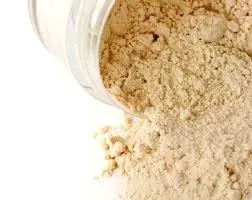Theobromine vs. Caffeine A Structural and Functional Comparison
The world of organic chemistry boasts a range of fascinating compounds, among which theobromine and caffeine stand out due to their widespread use and physiological effects. Both are classified as xanthines, and while they share many structural similarities, their unique properties make them serve different purposes, especially in the realm of human consumption and pharmacology. In this article, we will delve into the structural differences and similarities between theobromine and caffeine, as well as their respective effects on the body.
Structural Similarities
At the molecular level, both theobromine and caffeine are derived from the purine base and share a key structural element the xanthine skeleton. This skeleton consists of a fused bicyclic structure containing nitrogen atoms. The primary difference in their structures lies in the number and arrangement of methyl groups attached to the nitrogen atoms.
Caffeine, chemically known as 1,3,7-trimethylxanthine, has three methyl groups attached—specifically at the 1, 3, and 7 positions of the xanthine ring. In contrast, theobromine, or 3,7-dimethylxanthine, has only two methyl groups, located at positions 3 and 7. This subtle difference in methylation has significant implications for their behavioral and physiological effects in organisms.
Structural Differences
The reduced number of methyl groups in theobromine results in different physicochemical properties compared to caffeine. The presence of only two methyl groups in theobromine reduces its hydrophilicity, making it less soluble in water than caffeine. This structural peculiarity contributes to the slower metabolism and prolonged duration of theobromine’s effects in the body.
theobromine vs caffeine structure

Another aspect to consider is the structural orientation of the functional groups on the xanthine ring, which also affects their interaction with various receptors in the body. The specificity of these interactions largely informs the differential physiological responses observed when consuming foods and beverages containing these substances.
Physiological Effects
Despite their structural similarities, theobromine and caffeine produce different physiological effects due to their varying affinities for the body’s adenosine receptors. Caffeine is a well-known stimulant that blocks adenosine receptors, which normally promote relaxation and drowsiness. This antagonism leads to increased alertness, heightened mood, and enhanced cognitive function—effects that are well-documented and widely sought after, especially in coffee and energy drinks.
On the other hand, theobromine exhibits a milder stimulating effect. While it does have a weaker antagonistic effect on adenosine receptors compared to caffeine, its unique property as a vasodilator results in a distinctive profile of action. This vasodilatory effect contributes to the relaxation of smooth muscles and can promote better blood circulation. Interestingly, theobromine is often found in chocolate, providing both delight and moderate stimulation without the jitteriness sometimes associated with caffeine.
Summary
In summary, theobromine and caffeine, while structurally akin as derivatives of the xanthine skeleton, offer distinct experiences both chemically and physiologically. Caffeine's three methyl groups endow it with robust stimulant properties, making it a staple in various dietary routines. In contrast, theobromine’s two methyl groups yield milder effects, lending it qualities more aligned with relaxation and subtle stimulation.
Understanding these structural differences and their implications enriches our appreciation of these compounds and their roles in our daily lives. Whether enjoying a cup of coffee for a boost of energy or indulging in chocolate for a moment of bliss, knowing how theobromine and caffeine affect us can help us make informed choices about our consumption of these beloved substances. As we continue to explore the chemistry behind our food and beverages, the contrast between theobromine and caffeine remains a quintessential example of how slight molecular variations can lead to diverse effects in the human body.

